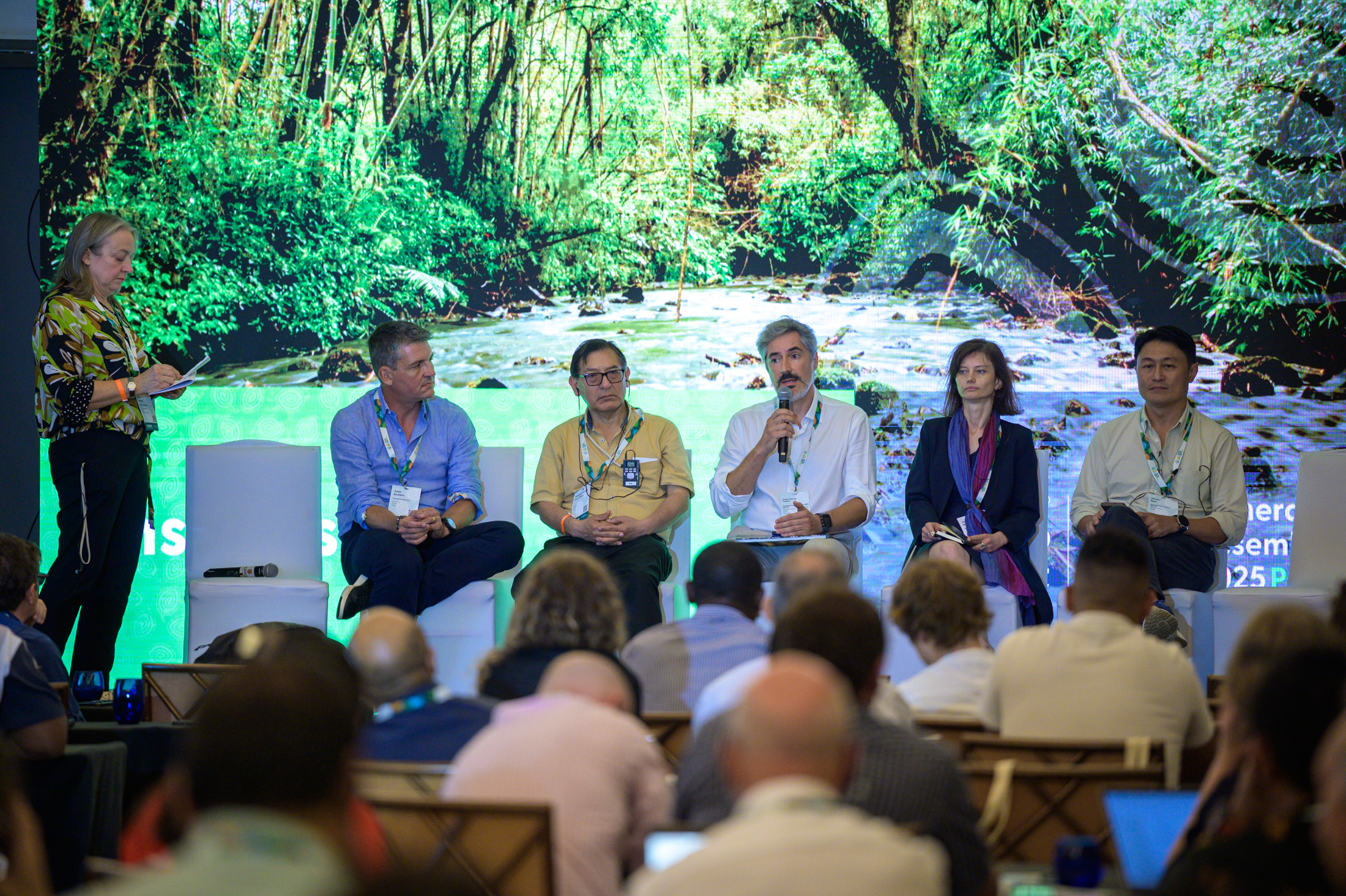Setting the scene
Julia Young from the High Conservation Network opened the session by outlining how HCVs are currently applied across forest management and controlled wood standards, but with “quite a bit of variability” between countries. She emphasized that clearer, more consistent monitoring and greater transparency could help FSC members and certificate holders demonstrate measurable impact.
Panelists from organizations including Arauco, BirdLife Portugal, WWF Malaysia, and FSC International and expert Rodrigo Arce Rojas from Ricardo Palma University and National University of Engineering, Peru shared experiences from the field, highlighting both achievements and challenges – from native forest protection in South America and species conservation in Portugal, to integrating social and cultural values in Malaysia.
Several noted that HCVs often exist beyond protected areas, making FSC certification a unique mechanism to safeguard biodiversity and community values across productive landscapes.

What are High Conservation Values?
High Conservation Values is a concept originating from FSC and embedded in FSC’s Principles and Criteria. This approach includes six categories of significant biological, ecological, social, or cultural values in a forest – such as rare species, critical ecosystem services, and community needs. These six categories must be identified, managed, and monitored to ensure they are protected from negative impacts.
When identified, maintained, and enhanced, HCVs help protect the ecosystems, species, and cultural values that underpin a healthy climate and resilient future.
“The HCV approach is part of what makes FSC unique and it is time we treat it not just as a compliance tool, but as a driver for demonstrating real, measurable impact.”
— Arie Soetjiadi, HCV Network
The road ahead for HCVs in FSC
Safeguarding HCVs is central to sustainable development –preserving biodiversity, supporting local communities, and valuing the cultural and ecological services forests provide.
So looking forward, how can we leverage the lessons learned in the last 30 years to create a greater impact?
“There are roughly 34 million hectares of identified HCV areas in FSC-certified forests – that’s a huge asset base. We now need to use this to show impact and outcomes.”
— Julia Young, HCV Network
Participants called for FSC to strengthen its guidance and digital tools for HCV identification and monitoring, align data systems with outcome-based reporting, and continue dialogue on integrating HCVs into broader impact and restoration frameworks.
“We need more monitoring. We’re using satellite images, camera traps, even forest sound recordings — but sharing this data openly is key to transparency and collaboration.”
— Juan Anzieta, Asset and Sustainability Manager at Arauco.
Key takeaways:
-
Greater consistency, monitoring, data sharing, and transparency across FSC-certified forests to better demonstrate conservation impact.
-
Over 30 million hectares within FSC-certified areas include HCVs — a significant, yet underutilized, asset.
-
Integrating HCVs into FSC’s outcome-oriented approach and expanding monitoring tools, including digital platforms and satellite data, will be essential for future progress.


